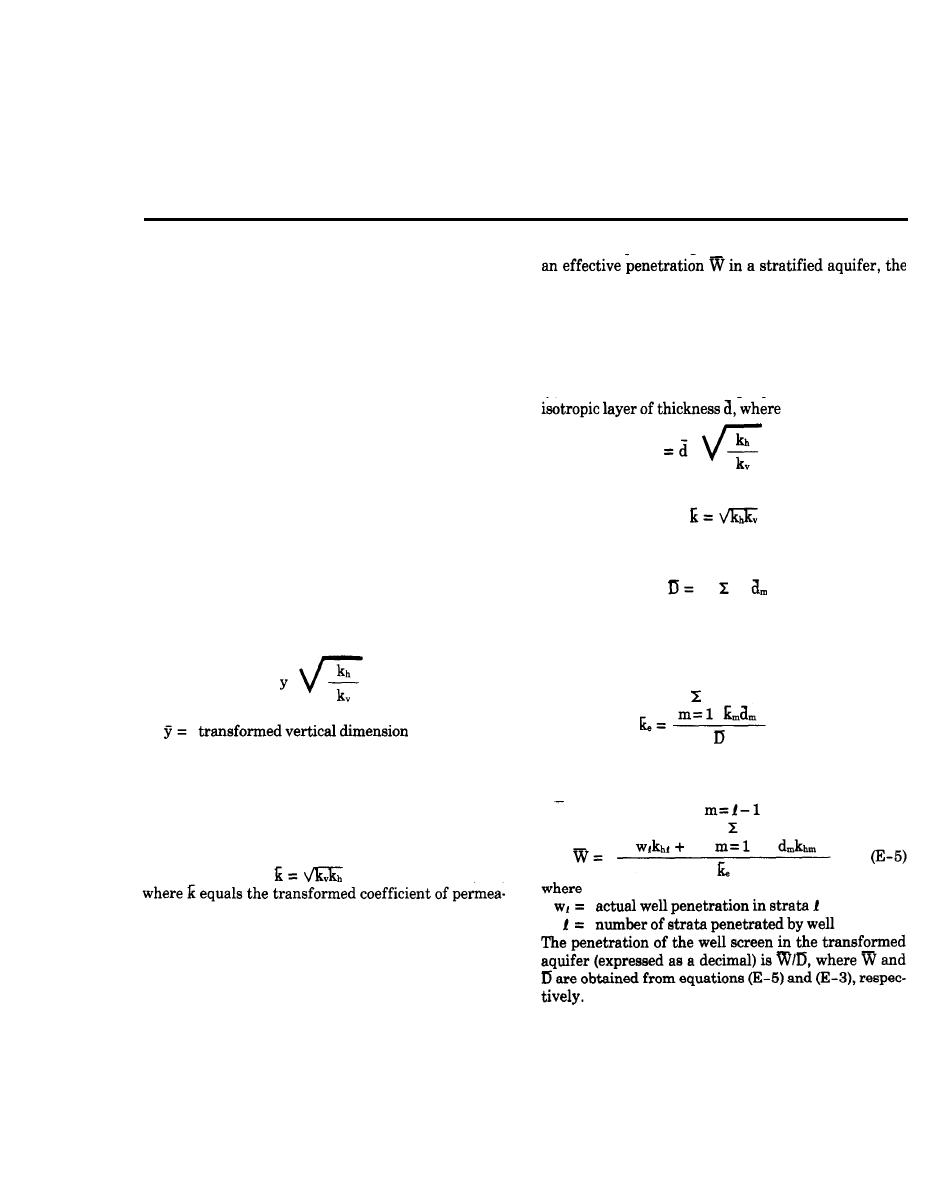
TM 5-815-5/AFM 88-5, Chap 6/NAVFAC P-418
APPENDIX E
TRANSFORMATION OF ANISOTROPIC SOIL CONDITIONS
TO ISOTROPIC SOIL CONDITIONS
E-1. General. All of the analytical methods for
mine the required length of well screen W to achieve
computing seepage through a permeable deposit are
based on the assumption that the permeability of the
following procedure can be used. This method is used
deposit is isotropic. However, natural soil deposits are
in analyses to determine penetration depths needed to
stratified to some degree, and the average permeabil-
obtain required discharge from partially penetrating
ity parallel to the planes of stratification is greater
wells or wellpoints. Each stratum of the previous foun-
than the permeability perpendicular to these planes.
dation or aquifer with thickness d and horizontal and
Thus, the soil deposit actually possesses anisotropic
vertical permeability coefficients kh and kv, respective-
permeability, with the permeability in the horizontal
ly, is first transformed using equation (E-1) into an
direction usually the greatest. To construct a flow net
or make a mathematical analysis of the seepage
through an anisotropic deposit, the dimensions of the
deposit and the problem must be transformed so that
the permeability is isotropic. Each permeable stratum
The transformed coefficient of permeability of each
of the deposit must be separately transformed into iso-
stratum from equation (E-2) is
tropic conditions. If the seepage flows through more
than one stratum (isotropically transformed), the
The thickness of the equivalent homogeneous isotropic
analysis can be made by a flow net constructed to ac-
aquifer is
count for permeability of the various strata.
E-2. Anisotropic stratum. A homogeneous,
(E-3)
m=1
anisotropic stratum can be transformed into an iso-
where n equals the number of strata in the aquifer.
tropic stratum in accordance with the following equa-
The effective permeability of the transformed aquifer
tion:
is
m-n
(E-1)
where
E-4
y = actual vertical dimension
where n equals the number of strata in the aquifer.
kh = permeability in the horizontal direction
The effective well-screen penetration into the trans-
kv = permeability in the vertical direction
formed aquifer is
The horizontal dimensions of the problem would re-
main unchanged in this transformation. The permea-
bility of the transformed stratum, to be used in all
equations for flow or drawdown, is as follows:
(E-2)
bility.
E-3. Effective well penetration. In a strati-
fied aquifer, the effective well penetration usually dif-
fers from that computed from the ratio of the length
of well screen to total thickness of aquifer. To deter-
E-1


 Previous Page
Previous Page
